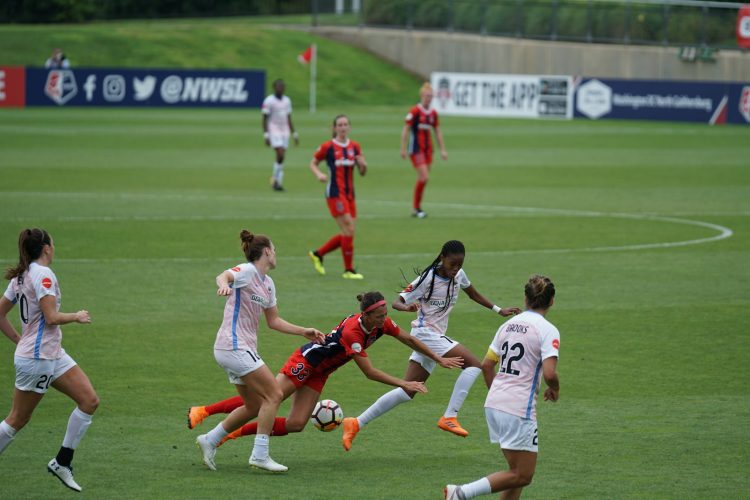Team dynamics play a crucial role in determining the success or failure of sports teams across various disciplines, from basketball and soccer to American football and rugby. Unlike individual sports, where success depends largely on a single athlete’s performance, team sports require coordination, collaboration, and a shared sense of purpose. Understanding the dynamics within a team is essential for coaches, players, and fans alike, as it can shed light on the factors that contribute to or hinder a team’s performance. This essay will explore the key elements of team dynamics in major sports, examining how leadership, communication, group roles, and culture influence the functioning and success of sports teams.
Leadership: The Guiding Force Behind a Team’s Cohesion
Leadership is arguably one of the most significant aspects of team dynamics in sports. Effective leadership can elevate a team, while poor leadership can contribute to its downfall. In team sports, leadership can take various forms. On one hand, a coach may serve as the strategic leader, making decisions on game tactics, substitutions, and overall team strategy. On the other hand, player leadership is also vital, especially in team sports that involve frequent in-game decision-making, such as basketball or soccer.
A strong leader, whether a coach or a captain, is someone who sets the tone for the team and inspires others to follow their example. A key component of leadership is the ability to communicate clearly and assertively. Captains, for instance, must not only guide their teammates in moments of crisis but also motivate them during challenging times, especially when things are not going well on the field. A perfect example of a strong leader in soccer is former Barcelona captain Lionel Messi. Messi led by example, not only with his exceptional skills but with his calm, collected demeanor on the field, helping to keep the team united during high-pressure moments.
In contrast, poor leadership can result in disarray and a lack of direction. The absence of clear leadership often leads to players competing against each other rather than collaborating toward a common goal. In some cases, this can also manifest in tension between the coach and players, creating an unhealthy dynamic that stifles the team’s potential. An example of this can be seen in the downfall of certain high-profile teams when internal conflicts or lack of strong leadership contributed to their failure.
Communication: The Cornerstone of Effective Teamwork
Effective communication is at the heart of every successful sports team. In team sports, players must communicate constantly during the game to execute strategies, adjust to the flow of play, and support each other both offensively and defensively. Good communication is not just about verbal exchanges; it also involves non-verbal cues, such as body language and eye contact, which can communicate urgency or tactical instructions without words.
In soccer, for example, players need to be in constant communication with one another to maintain defensive shape, move the ball forward, and create scoring opportunities. Without clear communication, a team’s efforts become disjointed, and players may find themselves out of position, exposing vulnerabilities that opponents can exploit. A good example of effective communication in action is seen in the “pressing game” employed by teams like Jurgen Klopp’s Liverpool FC. The players are required to communicate quickly and decisively to press the opponent high up the pitch, ensuring that the team functions as a cohesive unit rather than as individual players.
In contrast, a lack of communication can lead to confusion, missed opportunities, and a fragmented approach to the game. A famous example of poor communication leading to failure occurred in the 2018 FIFA World Cup when a miscommunication between the Brazilian goalkeeper Alisson Becker and his defender caused an own goal, resulting in a costly mistake that ultimately hurt the team’s chances.
Group Roles and Chemistry: The Balance Between Individuality and Teamwork
Every successful team relies on a well-defined division of roles and a strong sense of group chemistry. In major sports, each player brings a unique set of skills to the table, and understanding where each individual fits into the team’s structure is essential for success. Whether it’s a striker in soccer, a quarterback in American football, or a center in basketball, each player must understand their specific role and how it contributes to the overall strategy.
For instance, in basketball, the point guard is often seen as the “floor general,” responsible for running the offense, setting up plays, and distributing the ball. On the other hand, forwards and centers are typically tasked with scoring and securing rebounds. When these players understand and embrace their roles, the team operates smoothly, with each member performing their function to the best of their ability. This is a prime example of role specialization, which, when executed well, can create a seamless team performance.
However, while role specialization is important, successful teams also rely heavily on group chemistry. Players must trust one another, know when to step up and when to pass the ball, and understand each other’s strengths and weaknesses. A strong sense of group chemistry enables players to anticipate each other’s moves, creating a fluid and effective playing style. One of the best examples of this chemistry in recent years is the Golden State Warriors in the NBA. Their “small-ball” lineup, featuring shooters like Stephen Curry, Klay Thompson, and Draymond Green, relies on an understanding of each other’s movements and an unspoken bond that allows them to perform at an elite level. The Warriors’ success demonstrates how important it is for players to not only understand their individual roles but also to trust each other and work together toward a common goal.
Culture and Team Dynamics: The Unseen Influence
Beyond leadership, communication, and roles, a team’s culture plays a critical role in shaping its overall dynamics. Team culture refers to the shared values, attitudes, and behaviors that bind a group of players together. It is often developed over time, influenced by the team’s history, the personalities of key players, and the overall philosophy of the coaching staff. A strong, positive culture can help a team stay motivated and united during challenging moments, while a toxic culture can lead to infighting, lack of accountability, and ultimately, failure.
In some cases, a team’s culture is defined by its winning tradition, such as with teams like the New England Patriots in the NFL or Real Madrid in La Liga. These teams have established a culture of excellence, where success is expected and winning is ingrained in the fabric of the team’s identity. This type of culture can be incredibly motivating for players, as it fosters a sense of pride and a strong commitment to the team’s goals.
Conversely, teams that struggle with internal conflicts or lack a clear sense of purpose can develop a toxic culture that undermines performance. A notable example of a team plagued by internal issues is the 2018-2019 Los Angeles Lakers in the NBA. Despite having superstar players like LeBron James, the team’s inability to mesh together both on and off the court led to a disappointing season. Reports of internal friction, coupled with a lack of a unified team culture, hindered the Lakers’ ability to succeed.
The Impact of External Factors on Team Dynamics
While internal dynamics are critical, external factors such as media pressure, fan expectations, and even travel schedules can also influence how a team performs. In modern sports, the media often plays an outsized role in shaping public perception of a team, and the added pressure of high expectations can create stress among players and coaches. For example, in soccer, teams like Manchester United are regularly under intense scrutiny due to their high-profile status. The media attention can affect the mental and emotional well-being of players, sometimes leading to tension within the squad.
Similarly, the impact of traveling for away games or playing in different time zones can affect a team’s physical and mental state. The best teams manage these external factors by maintaining a strong sense of unity and focus, ensuring that they can handle adversity and remain mentally prepared for any challenge that comes their way.





